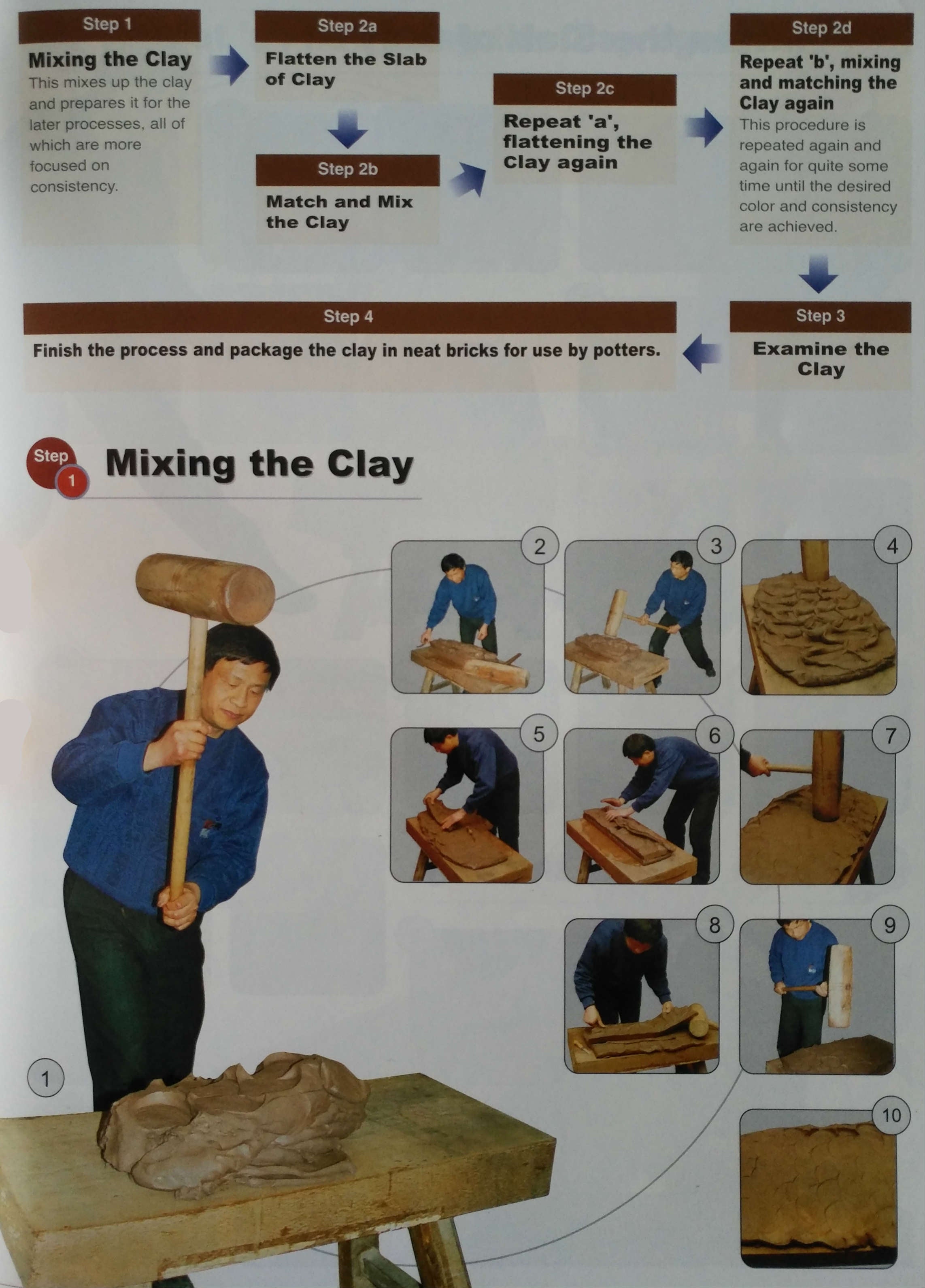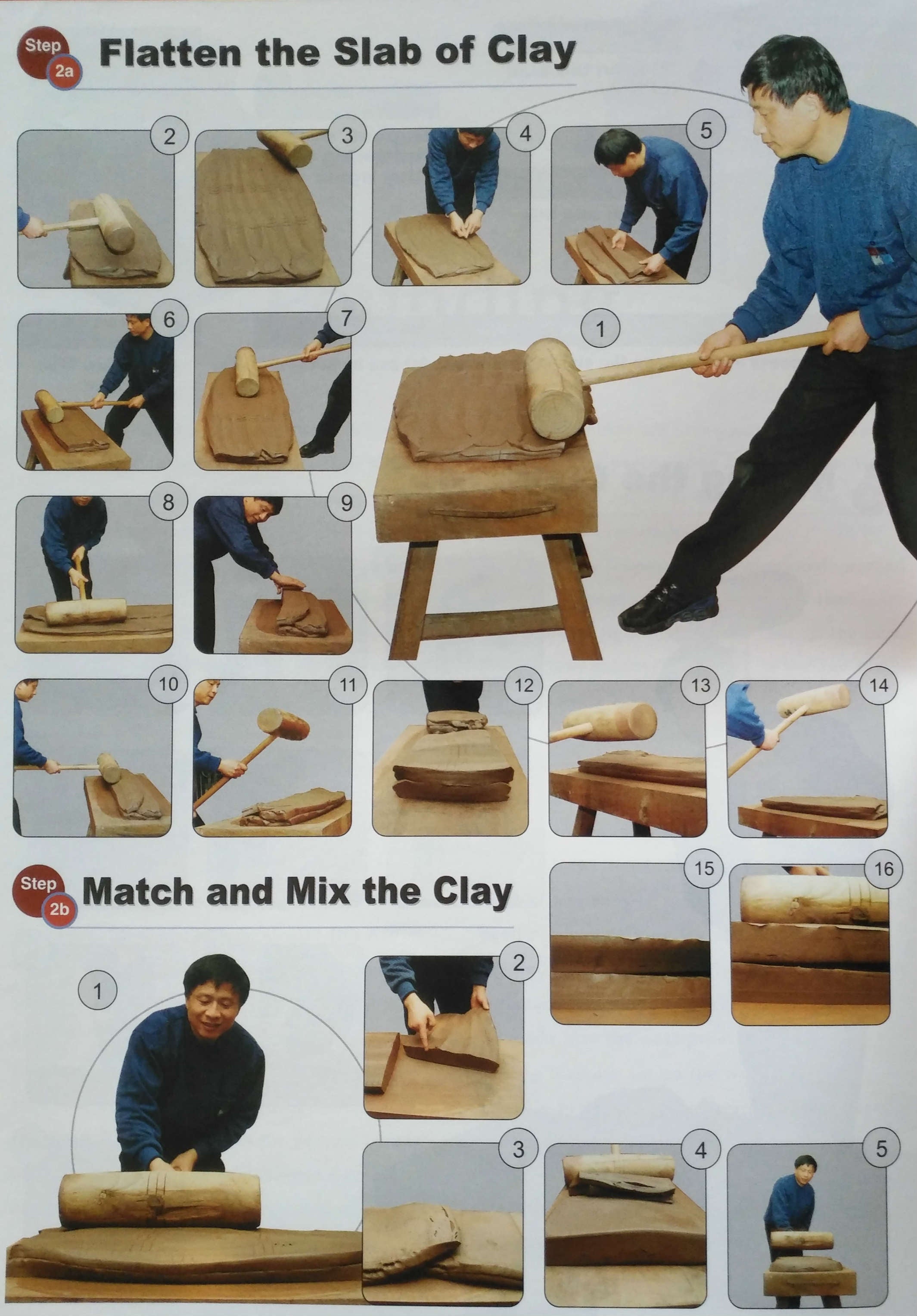In the first issue we traveled to Yixing and interviewed clay master Jun Xin Chen about the way that the ores are mined from the earth and eventually processed into the clay used to make the beautiful pots that line our shelves. When the clay is refined and purchased, the pottery studio will often knead it in order to make the clay more flexible, giving it a nice putty-like consistency. Traditionally this process was done by hand using a large wooden mallet. The pounding and kneading also removes all trapped air from the clay, which would be disastrous to the teapot. In the kiln the hot air trapped in the clay would expand and shatter the piece. Most shops like master Jun Xin Chen's will process the clay, but potters prefer to repeat the procedure anyway because the consistency will have changed during transportation and that way they can also be sure that all air pockets have been completely removed. This also allows the potters to mix together similar clays of different consistency or color to achieve the desired end-product. Yixing teapots are handbuilt rather than thrown on a potter's wheel (though some cheaper versions are slip-cast). For that reason the craftsmen prefer more flexible clay. We asked Ge Tao Jhong to demonstrate the process that clay undergoes before it can be used to make teapots and he graciously agreed to show us,explaining each stage in the procedure as he went. He said that all the best studios still process their clay in the age-old manner, using a wooden table and mallet.
"Only after proper pounding will clay be ready for use, and without it the pots just aren't the same" he said. There was an artistic kind of Kung fu in the way that he deftly swung, pounded, twisted and tapped the mallet on the clay. It was easy to see that Ge Tao Jhong had been processing clay for many years. He seemed to know intuitively when the clay was finished. The neatly stacked bricks, ready to be made into the next great generation of Yixing tea set sat on the wooden table proudly bragging about their elegant future, polished and nurtured on some collector's shelf.
There are four major steps in the production of the clay, though the second one is divided into four parts:



